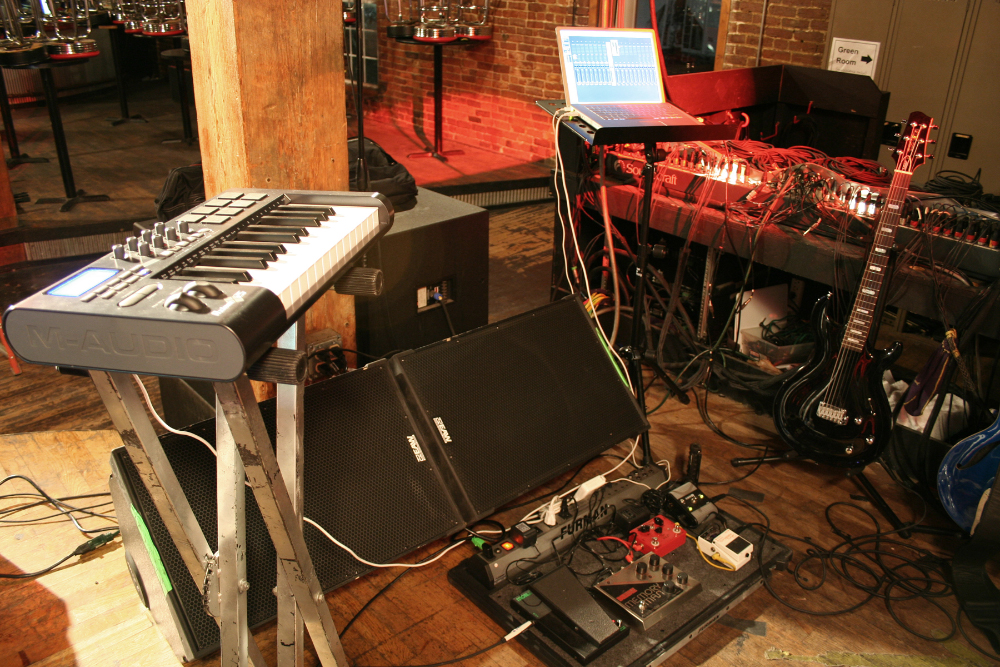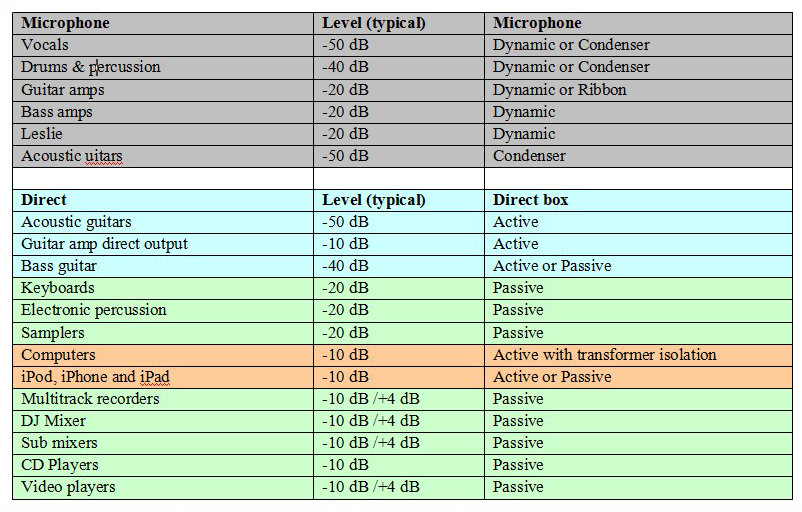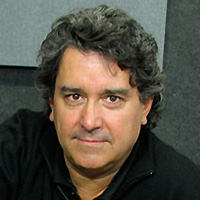Today’s live stage productions have become tremendously complex. All sorts of different instruments and electronic sources must be “orchestrated” along side the microphones and signals that need to be split off to a multitude of mixers to feed the house system, stage monitors, in-ear monitors, broadcast truck, Internet uplink and recording system.
Paramount to the design is trying to insure some form of simplicity or standardization that will allow quick changes should disaster occur. In fact, even with today’s most advanced digital consoles, some still choose to route lead vocal, guitars, bass and drums to a small analog desk hidden away just in case the computer crashes. After all, the show must go on!
Signal Path
There are three basic “signal level” groups used to run audio around the stage and venue before it is amplified:
1) Low level sources from voices and guitars are captured with mics and direct boxes. These typically range from -50 dB to -40 dB where their signal is sent to the mic preamp input on the mixing console.
2) Unbalanced line level sources from iPhones, computers, keyboards and CD players, which will typically vary from -20 dB to -10 dB. Their output will be sent to a direct box and mic input where a pad will usually be engaged to reduce the sensitivity as a means to avoid distortion.
3) Balanced professional level devices such as mixing consoles, professional recorders and crossovers, which are rated at +4 dB but are often capable of producing as much as +22 dB or more. These signals are used to drive the power amplifiers, which in turn drive the loudspeakers.
Note that each of these sources will be treated with a different interface. Table 1 shows common devices that the engineer will select. Table 2 offers a general overview of signal level groups.
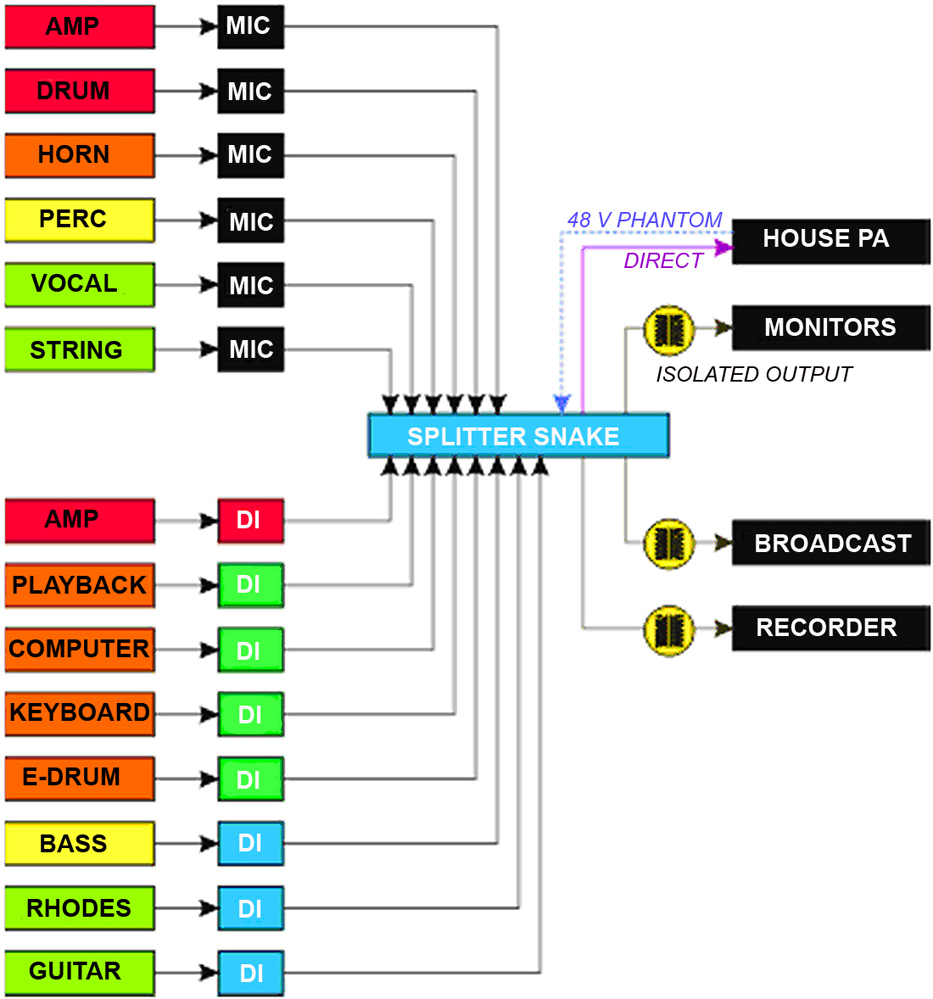
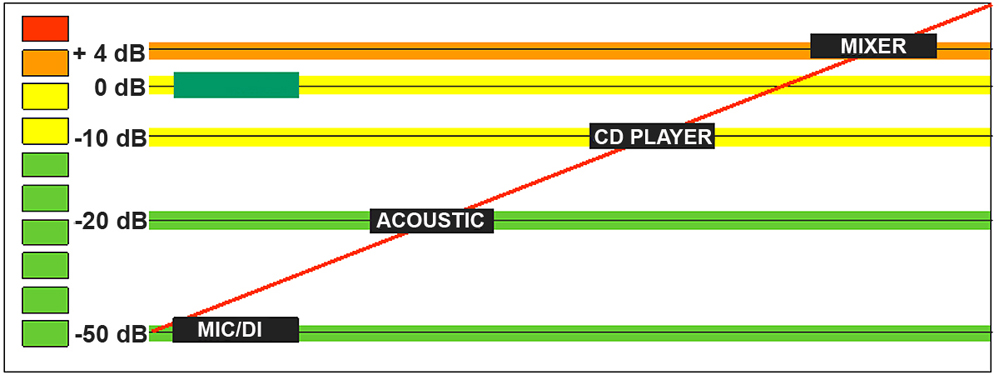
Although there are no hard-and-fast rules, it’s common to find dynamic mics on snare and kick drums, while a condensers are more often used on drum overheads. Acoustic guitars, when miked, tend to be outfitted with a condenser, while electric guitar amps tend to have a dynamic stuck right on the cone or have a direct feed from the amp or cabinet.
Active direct boxes (DIs) tend to be used on lower level signals such as a direct feed from a bass guitar or acoustic, while passive DIs tend to be preferred for high output devices such as keyboards, samplers and digital playback systems. The benefit of passive DIs is their ability to withstand greater signal levels while introducing galvanic isolation that can help eliminate ground loops.
Keep in mind that most high output devices are “plugged in” to the AC system and therefore are more prone to ground problems because they share the earth-ground with lighting systems, motors and stage amplifiers.
Setting Common Levels
With so many different levels on stage, trying to cope during a hectic show can be a nightmare unless you introduce some form of sanity into the equation.
Sanity is achieved by converting all signal levels to a single common denominator: the low-Z balanced microphone. By converting everything to mic level, one no longer has to worry about what cable is used for what and which channel is connected where.
This is particularly important with respect to the mic splitters inside the snake system – most use special mic level bridging transformers that isolate the front-of-house console with the monitor desk to help eliminate ground loops.
These low-level transformers are designed to accept signals from -70 dB to around -30 dB. So if you plug in a +4 dB signal into one, it will overload (saturate) and distort.
This is the primary reason why the direct box output is mic level, because it must work along side the mic and be easily interchanged with another signal path should a snake channel be faulty or a mixer input have a problem. Commonality makes it easy.
Crosstalk In The Snake
Once the signal is mixed and ready to be distributed, the output of the console will be sent back to the stage, where it will be split off to the amplifier racks and loudspeakers. This brings to mind a problem known as crosstalk, and further solidifies why you really want to keep all of your stage signals at parity.
For instance, some snake systems combine the low-level feed from the stage (say -50 dB) going to the mixer along with the high level return path to the crossovers, amplifiers and loudspeakers (+4 dB). These are usually configured in formats such as a 24 x 4, 32 x 8 or 40 x 8 with 40 mic channels and 8 returns.
Although it offers the convenience of only running one snake cable, this design can sometimes pose a problem because the twisted pair wires are in close proximity to each other inside the snake cable.
Although there is no electrical connection, all electric wires emit a magnetic field as they propagate. The “greater” the signal level, the greater the magnetic field.
These magnetic fields interact even though the snake may employ protective twisted pair conductors and shielding. When one signal is louder than the other (drive snake), it will invariably pollute the other (microphone).
The result is that the mic line can pick up the return path, resulting in residual drums leaking into the vocal mic. This is why most professional touring companies employ a different return path called a drive snake.
These are often 12 channels allowing the crossover to reside at front of house, and are usually configured with a 37-pin connector at each end and some form of custom termination box.
Today, with the proliferation of digital crossovers and self-powered line arrays, the drive snake is now being replaced by a digital counterpart, particularly at the high-end concert touring level.
Feeding Other Devices
O.K., with all signals coming off the stage at mic level, the mic splitter is now ready to send these to the monitor desk, the recording system and the broadcast truck. Most professional touring companies employ transformer isolated splitters to do this task.
There are several reasons for this. It allows each operator (front of house, monitors, etc) to have direct access to the mic or direct box input level. In other words, each operator can set the ideal trim and level control from the mic going into the mixing desk without it impeding what may be going on at the other mix positions.
Transformer isolation is by far the most effective means of isolating one electrical device from another, and it also helps eliminate ground loops. Broadcast trucks are usually outfitted with a series of XLR inputs that are transformer isolated for this very reason. There old adage “time is money” absolutely applies here. If you have a buzz problem in your system and you can make it go away quickly, you’re winning!
The same applies to remote loudspeaker towers in festival environments. Most top-end touring companies always have line level isolators in their tool kits for this very reason.
Field generators or alternate power sources often cause AC disruption which can further compromise the audio. A quality isolator will help tremendously in these instances.

